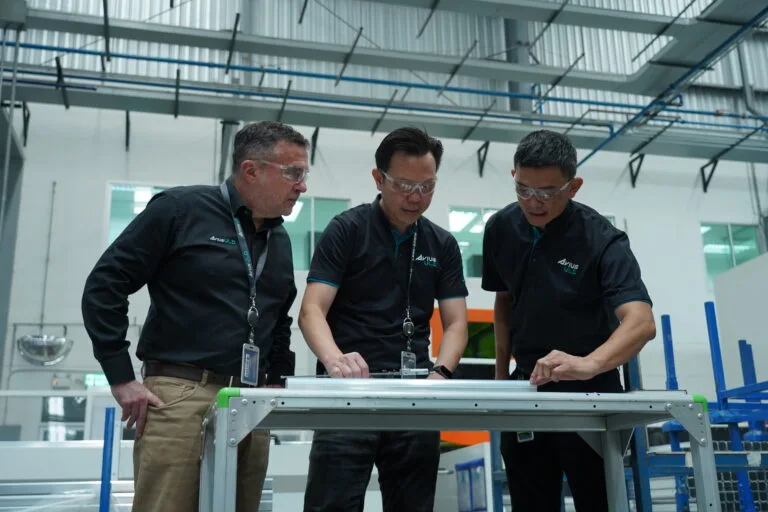Navigating ULD Demand: The Evolving Airfreight Landscape
Steady but Uneven Market Momentum
Global airfreight is experiencing steady yet uneven growth as airlines adapt to changing economic and environmental pressures. In early 2025, both passenger traffic and cargo volumes grew year-on-year, although the pace slowed by midyear. Geopolitical tensions, shifting U.S. tariffs, delayed aircraft deliveries, and rising carbon-emission requirements have all contributed to market complexity. Despite these headwinds, analysts remain cautiously optimistic, with forecasts projecting roughly 4% annual air cargo growth over the next two decades.
According to Charles Drummond, CEO of AviusULD, airlines are now taking a far more tactical approach to Unit Load Device (ULD) procurement. “Operators are balancing operational needs against sustainability and cost efficiency more carefully than ever before,” he notes.

Diverging Trade Lanes and Cargo Segments
Trade performance continues to vary across regions. The Asia–North America lane has softened due to tariff changes, while Asia–Europe and Middle East–Asia routes remain resilient. E-commerce, growing around 9% annually, is reshaping logistics flows through Southeast Asia and the Middle East. Meanwhile, the pharmaceutical sector, with temperature-controlled logistics expanding at approximately 10% per year, is driving innovation in thermal management and energy-efficient container design.
Perishable cargoes such as seafood, flowers, and premium produce remain critical to airfreight. Drummond highlights that innovation in passive insulation and thermal covers is helping carriers ensure product integrity across complex cold chains.
Sustainability and the Weight Challenge
Aviation’s decarbonisation efforts are pushing airlines to rethink more than just fuel efficiency. Independent research by AviusULD and EcoMatters shows that over 99% of a ULD’s lifetime emissions occur in flight, primarily from the extra fuel needed to carry its weight. Consequently, reducing tare weight has become the most effective way to lower emissions.
This shift has accelerated adoption of lightweight composite materials in place of traditional aluminium. AviusULD’s Endumax® containers, weighing as little as 51 kg, exemplify this move toward lighter, stronger, and more repairable solutions. These materials not only reduce fuel burn and carbon emissions but also enhance durability, thereby lowering total cost of ownership (TCO).
Safety Innovation and Fire-Resistant Designs
Rising shipments of lithium battery-powered devices are intensifying safety requirements. Airlines are increasingly deploying fire-resistant containers and containment covers, though adoption rates differ by region. AviusULD’s SmartULD Firetag system integrates fire detection sensors and digital tracking to identify early signs of lithium battery off-gassing, allowing intervention before thermal runaway occurs.
At the same time, new aircraft types such as the Airbus A321XLR are reshaping cargo operations. These narrowbody long-haul aircraft use multiple AKH containers that, while smaller than standard LD3s, optimize bellyhold efficiency. Drummond expects AKH demand to grow rapidly at major North American and European gateways.
Redefining Total Cost of Ownership (TCO)
Airlines are now applying more sophisticated models to assess TCO. Beyond initial purchase price, operators must account for factors such as fuel consumption, repair frequency, asset loss, repositioning, and lifecycle management.
Short-term leasing has emerged as a tactical response to seasonal demand spikes, while outsourcing ULD management provides a more strategic, cost-flexible approach that converts capital expenditure into operational expense. IoT tracking now allows some airlines to reduce buffer stocks from seven to as few as three shipsets per aircraft, improving efficiency.
Even small design changes can yield significant benefits. Drummond points to AviusULD’s SEN Door, which replaces traditional Velcro closures—often a common repair point—with a patented system that reduces downtime and repositioning emissions.
Circular Design and Sustainable Choices
Sustainability has become a decisive factor in ULD procurement. Airlines increasingly evaluate lifecycle impacts, understanding that aluminium’s recyclability alone does not offset its higher weight-related emissions. With weight reduction driving over 99% of carbon savings, composite materials offer clear advantages.
AviusULD’s modular Endumax® panels, up to 14 kilograms lighter than comparable aluminium units, extend service life while supporting refurbishment and recycling—key components of a circular economy.
Another emerging trend is the rise of collapsible containers. While slightly heavier when loaded, these designs fold flat for repositioning, drastically cutting fuel use during empty backhauls and improving network-wide carbon efficiency.
IoT Tracking and Predictive Maintenance
Digital transformation is reshaping how ULDs are managed. Approximately 20% of ULDs worldwide are now equipped with IoT tracking. However, tracking has evolved beyond simple location monitoring to include data on condition, occupancy, and impact events.
Predictive maintenance is a major outcome of this shift, allowing airlines to detect damage earlier and optimise repair scheduling. Drummond explains that current BLE-based systems provide limited visibility and require costly reader infrastructure. In contrast, AviusULD’s energy-harvesting technology removes these barriers by powering advanced sensors without batteries or fixed infrastructure, enabling real-time global visibility and longer device lifespans.
As digital adoption scales, the industry is moving toward exception-based management, where AI and analytics highlight only anomalies instead of manually tracking every asset—streamlining operations and decision-making.
Harmonisation, Repair, and Industry Outlook
Operational inconsistency remains a persistent challenge. Variations in ULD handling, storage practices, and training contribute to higher damage rates and inefficiency. Drummond advocates for global harmonisation of standards to minimise these issues and ensure compliance across networks.
Repair strategies also play a role in sustainability. Decentralised repair models can cut downtime and emissions, though they require robust contractual and analytical oversight. AviusULD’s Ascend programme, based on Lean Six Sigma principles, has shown that repair stations can double output while reducing their carbon footprint, illustrating the untapped efficiency potential within the sector.
Looking forward, the airfreight industry is on the cusp of a transformation led by lighter, safer, and digitally enabled ULDs. The convergence of material innovation, IoT integration, and circular design practices will define which operators thrive in the coming decades. As Drummond concludes, “The next phase of airfreight growth will belong to those who master the balance between cost, sustainability, and operational efficiency.”
Please contact Tan Son Nhat Cargo for prompt assistance
Learn more:
Mở rộng nhà ga quốc tế Tân Sơn Nhất: Giải pháp giảm ùn tắc

